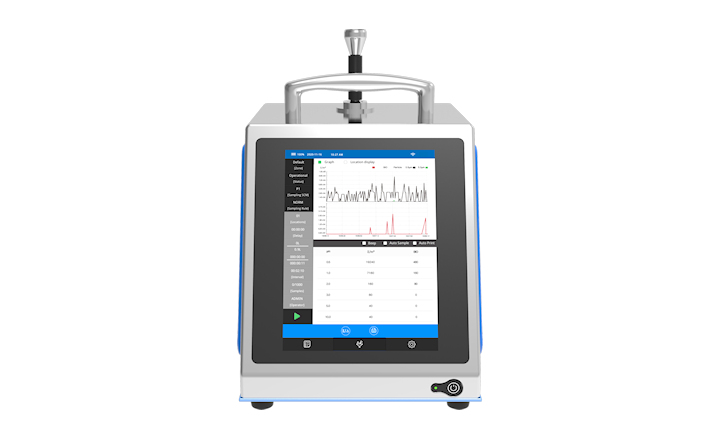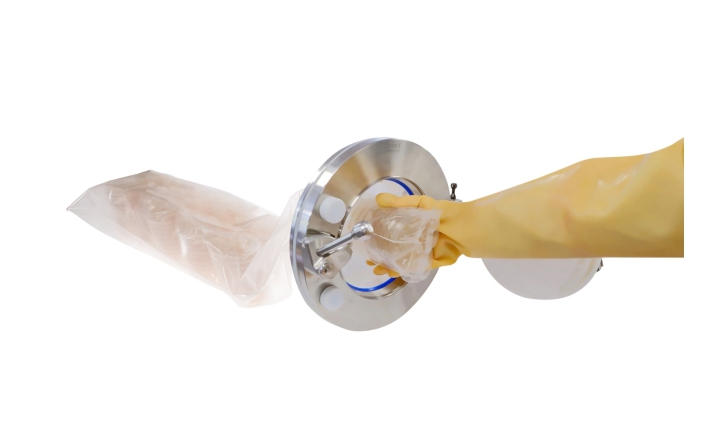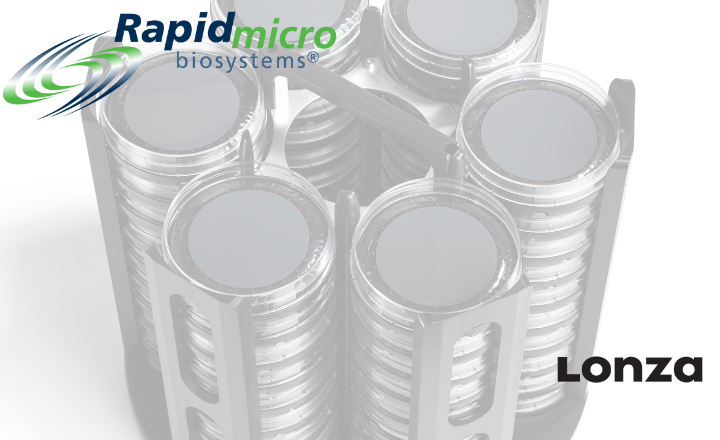When BRCGS published Packaging and Packaging Materials Standard Issue 6, it included clause 4.8.5 on environmental monitoring. This means that manufacturers of food packaging materials are now required to implement a microbiological environmental monitoring program, where appropriate, based on risk. This is to ensure that cleaning operations are effective in minimising the risk of microbial contamination from a packaging manufacturer’s product when it subsequently comes into contact with the food products it will contain. The programme should consider the likelihood of microorganisms’ survival on packaging materials. Finally, the clause also states that “where a programme is in place, this shall include”:
- a sampling protocol
- identification of sample locations
- frequency of tests
- target organisms
- test methods, and
- recording and evaluation of the results
- documentation of the microbiological environmental monitoring programme and its associated procedures
Food packaging manufacturers will now have to conform to this new standard if they want to satisfy the Global Food Safety Initiative (GFSI) and achieve certification when audited.
Environmental monitoring
In production environments, microorganisms are always present. Packaging and food manufacturers should implement environmental monitoring programs to examine the levels of hygiene in the production facility and the efficacy of cleaning and sanitation in the removal of microorganisms.
Environmental monitoring enables manufacturers to identify the presence of food spoilage microorganisms and food poisoning pathogens. These organisms may have been introduced into a food handling environment but not eliminated by routine cleaning procedures and may, therefore, cross-contaminate other food materials in production. It also helps to highlight areas where pathogens may be harbouring and have become resident in the facility.
Sampling the environment effectively
A well-designed environmental monitoring programme will enable the prompt detection of unacceptable microbial contamination. The last decade has seen environmental monitoring change from a random sampling approach, implementing imaginary grids over a production area and testing points within each grid, to more current methods that are built on risk assessment to determine the most appropriate approaches.
What makes a good environmental monitoring program? It should include the collection of samples from, for example, a work surface at different times throughout the production process to reflect the differing day-to-day working conditions; “based on risk”. Furthermore, samples should also be taken from these sites after cleaning and from areas that may be acting as niches for resident organisms.
Environmental sampling should not only be conducted on food contact surfaces but non-food contact surfaces as well. This includes doors, rollers, walls, conveyor belts, drains and air. This type of sampling is important as there are many vectors (particularly humans!) through which microorganisms can be transported from non-food contact surfaces to food products or food packaging. The results of these samples can be tabulated and compared with previous results or guidelines to identify trends.
Meeting the standard
To meet the new standard, packaging manufacturers must now prove that they have implemented an effective programme that is appropriate for what they are producing and are able to minimise the risk of contamination from pathogenic microorganisms, through their cleaning and hygiene operations, to their end-product.
As a minimum, the manufacturer’s environmental monitoring programme will include a sampling protocol, which does not create false positives or false negatives by:
- allowing post-sampling contamination, or
- killing organisms in the sample before the test is completed.
A manufacturer’s sampling procedure must be appropriate for their target organism(s), test methods and the locations that they will sample.
Suitable test locations must be identified, including areas or parts of equipment that are difficult to clean and could harbour organisms and areas of the production site or equipment that previously tested positive. The frequency of tests must also be considered, especially areas or equipment that have tested positive before or that may support microbial growth.
Food packaging manufacturers must identify target organisms that could present a risk to the product or environment, such as those organisms specific to the manufacturing environment - for example, Listeria spp. in wet environments or Enterobacteriaceae spp. in dry environments.
Manufacturing sites should consider which test methods are most applicable to their product production, evaluate the significance of their results and consider any actions required. Finally, the environmental monitoring “programme and its associated procedures shall be documented.”
BRCGS Global Standard for Packaging and Packaging Materials Issue 6
BRCGS has introduced environmental monitoring into its packaging standard to bring it in line with its Food Safety Standard Issue 8, where this is also a requirement.
In BRCGS Global Standard for Food Safety Issue 8, clause 4.11.8 states that risk-based environmental monitoring programs shall be in place for pathogens or spoilage organisms and they shall, at a minimum, include all production areas with open and ready-to-eat products. This is followed with clause 4.11.8.1, which advises that the design of the environmental monitoring programme shall be based on risk and include at a minimum (in line with the packaging standard) a sampling protocol, the identification of sample locations, the frequency of microbiological tests, identified target organism(s) (for example, pathogens, spoilage organisms and/or indicator organisms), defined test methods (for example, settle plates, rapid testing and swabs) and the recording and evaluation of results. Also, the environmental monitoring “programme and its associated procedures shall be documented.”
Environmental monitoring has also been included in the new BRCGS packaging guideline to reinforce product integrity and to allow manufacturers of food packaging products to be able to prove that their packaging is not introducing any contamination to the food manufacturing environments or food products that they will protect and transport.
The monitoring of the environment ultimately relies on what you are testing for. It also depends on the raw materials your product is made of, what the product will be used for, the environment it is being produced in and how it will be stored. Microbiological sampling is typically used to test the total number of viable microorganisms, which is a measurement of the survivability or growth of a range of microorganisms during a process and to consequently verify if the process can control these organisms.
As packaging is produced through a substantial thermal or chemical process, the raw materials should not be able to transfer microorganisms to the final product. Therefore, the microorganisms that would be sampled for are those that have been introduced from the environment, rather than having been there in the first place. These organisms can potentially contaminate the packaging and therefore pose a risk of contamination to the food product. So, we should be testing for what allows microorganisms to contaminate the processing environment and packaging product: personnel, surfaces, water and air.
Sampling methods
There are many methods used for environmental testing, including sensory, swabbing, contact plates, wipes, sponges, and assessing the product itself. When testing packaging, both open and closed surface techniques may be used. Swabs, sponges and wipes can sample larger areas and many individual containers, which is why they are favoured for tray-like packaging. Closed containers, on the other hand, may be sampled using a rinse solution that is introduced to the container, agitated and then tested. Flexible films may also be tested by either of these methods.
Water is normally tested by taking samples using swabs, dip slides or sterile pipettes. Personnel hands can be tested using contact plates and swabs. The air in the environment can be tested using settle plates and air samplers. The most rapid monitoring technique is based on the detection of adenosine triphosphate (ATP) – a chemical that indicates the presence of living cells. ATP swabs use a swab system that is tested using bioluminescence, identifying the amount of ATP (microbial and non-microbial) present and indicating the hygienic status of an environment. This type of testing is available for surfaces, water and air; however, this technique is more suited to food production environments and does not allow the detection of specific types of microorganisms.
As environmental monitoring is brand new to food packaging manufacturers, many considerations will need to be made by manufacturers. One important aspect to consider is the materials that the food packaging is made of; recent research has shown that some packaging materials can, if stored correctly, reduce the viability of spoilage and pathogenic microorganisms (Siroli et al. 2017) and the type of packaging material can significantly reduce the potential of microbial transfer from packaging to fruit (Patrignani et al. 2016). Another valuable point to consider is if the packaging product being produced may be used by purchasers for a use other than what it was intended for, as this may have other implications and associated risks. So, depending on what the packaging product is made of and what it is being used for, the environmental monitoring will need to be tailored to it.
At Campden BRI, we have a range of on-site packaging analysis and testing facilities. These allow us to investigate your packaging by conducting physical, microbiological, chemical, sensory and taint analysis. We can also advise you on legal compliance and ensure you are in the best position to comply with BRCGS Issue 6.
References
Siroli, L., Patrignani, F., Serrazanetti, D. I., Chiavari, C., Benevelli, M., Grazia, L., & Lanciotti, R. (2017). Survival of spoilage and pathogenic microorganisms on cardboard and plastic packaging materials. Frontiers in microbiology, 8, 2606.
Patrignani, F., Siroli, L., Gardini, F., & Lanciotti, R. (2016). Contribution of two different packaging material to microbial contamination of peaches: implications in their microbiological quality. Frontiers in microbiology, 7, 938.

Nigel Blitz joined Campden BRI as a food management systems specialist in 2019 following more than 20 years’ experience as a food, hygiene and quality manager across a broad range of food and beverage manufacturing environments. Nigel helps the industry by providing consultancy in environmental monitoring, internal factory design (to ensure it complies with BRCGS) and other factory hygiene-related issues. In addition to this, Nigel also teaches on food technology and microbiology courses and helps update guidance on the cleaning and disinfection of food factories.
Nigel Blitz
+44(0)1386 842080
nigel.blitz@campdenbri.co.uk
























